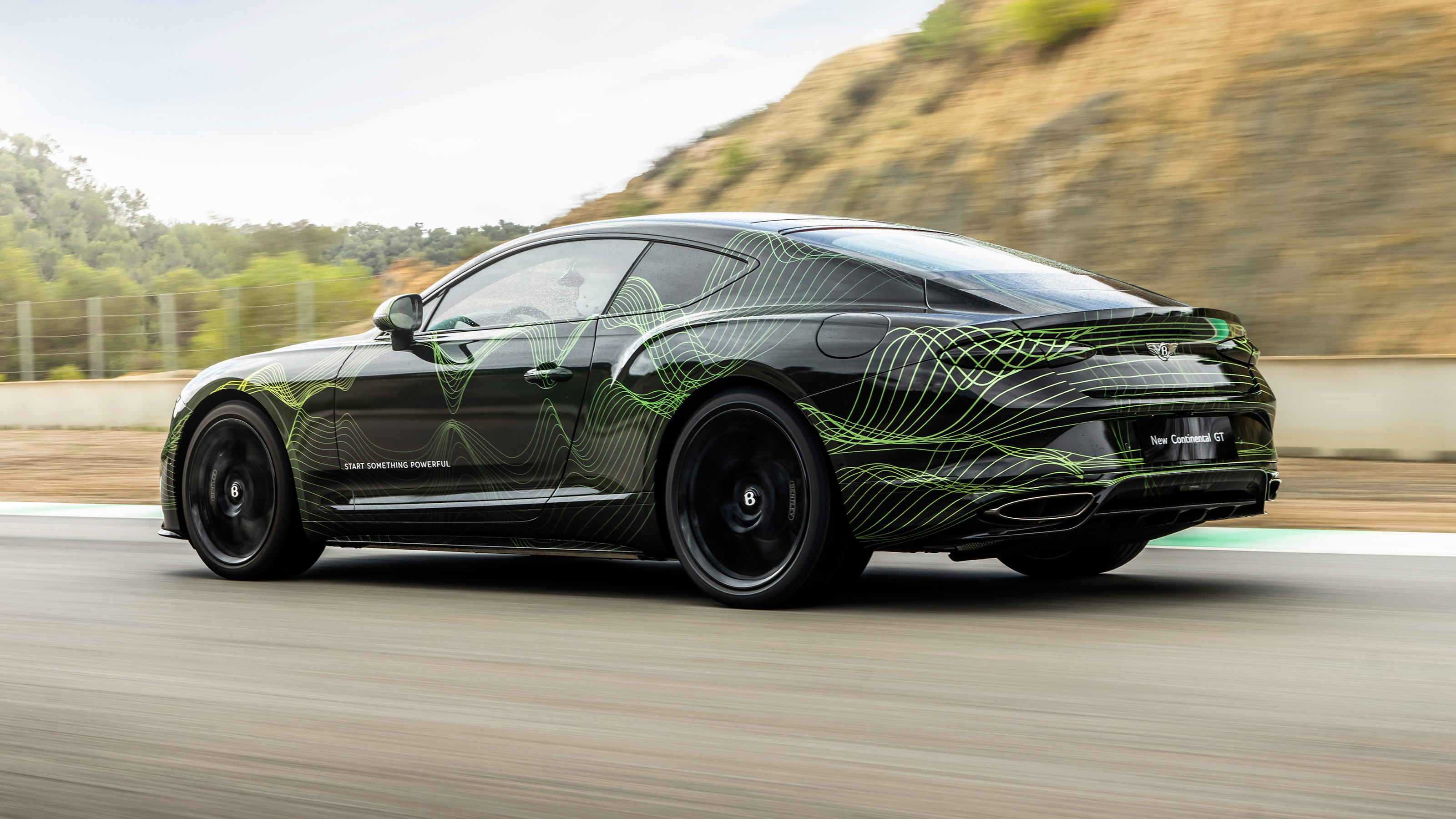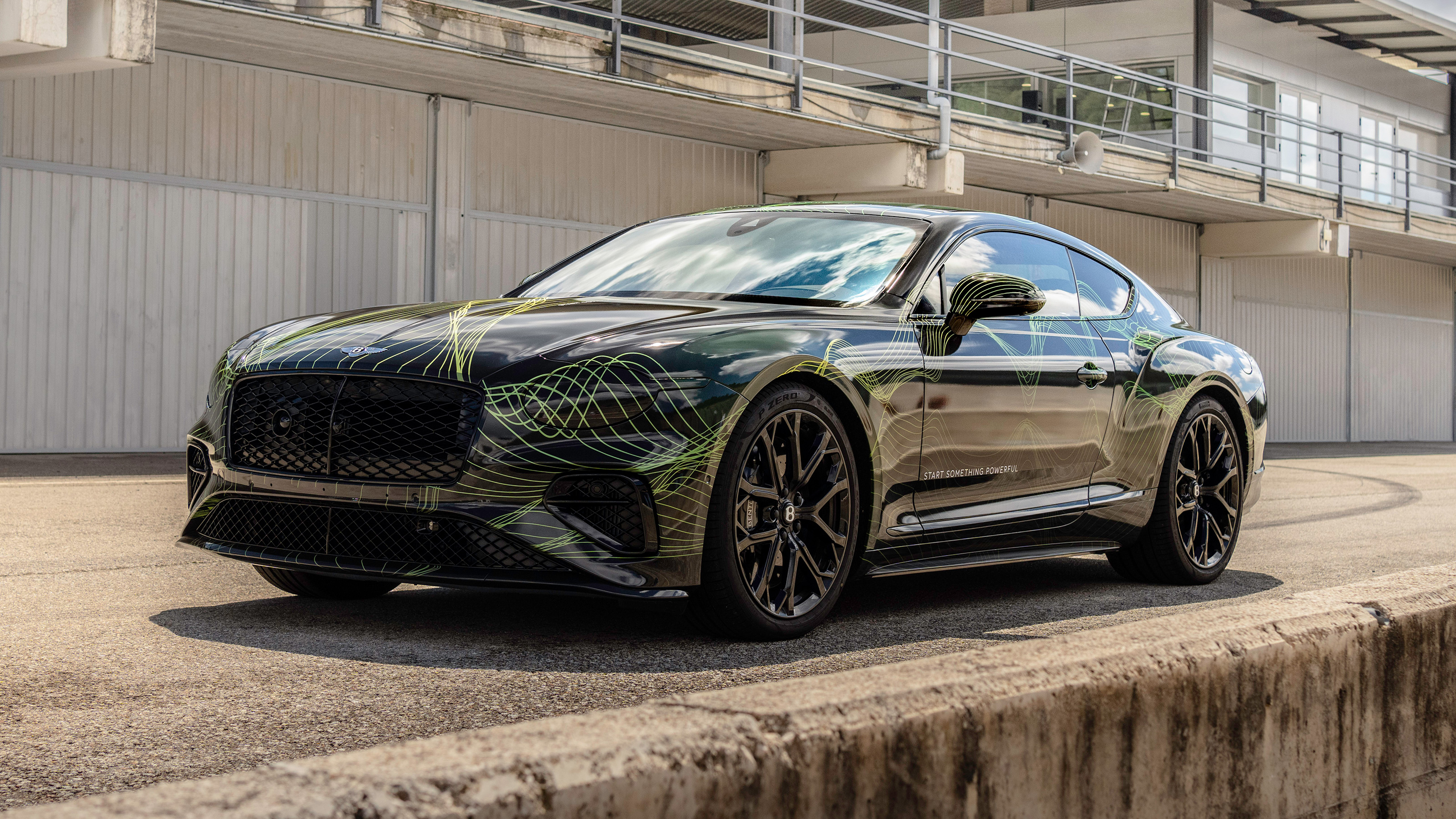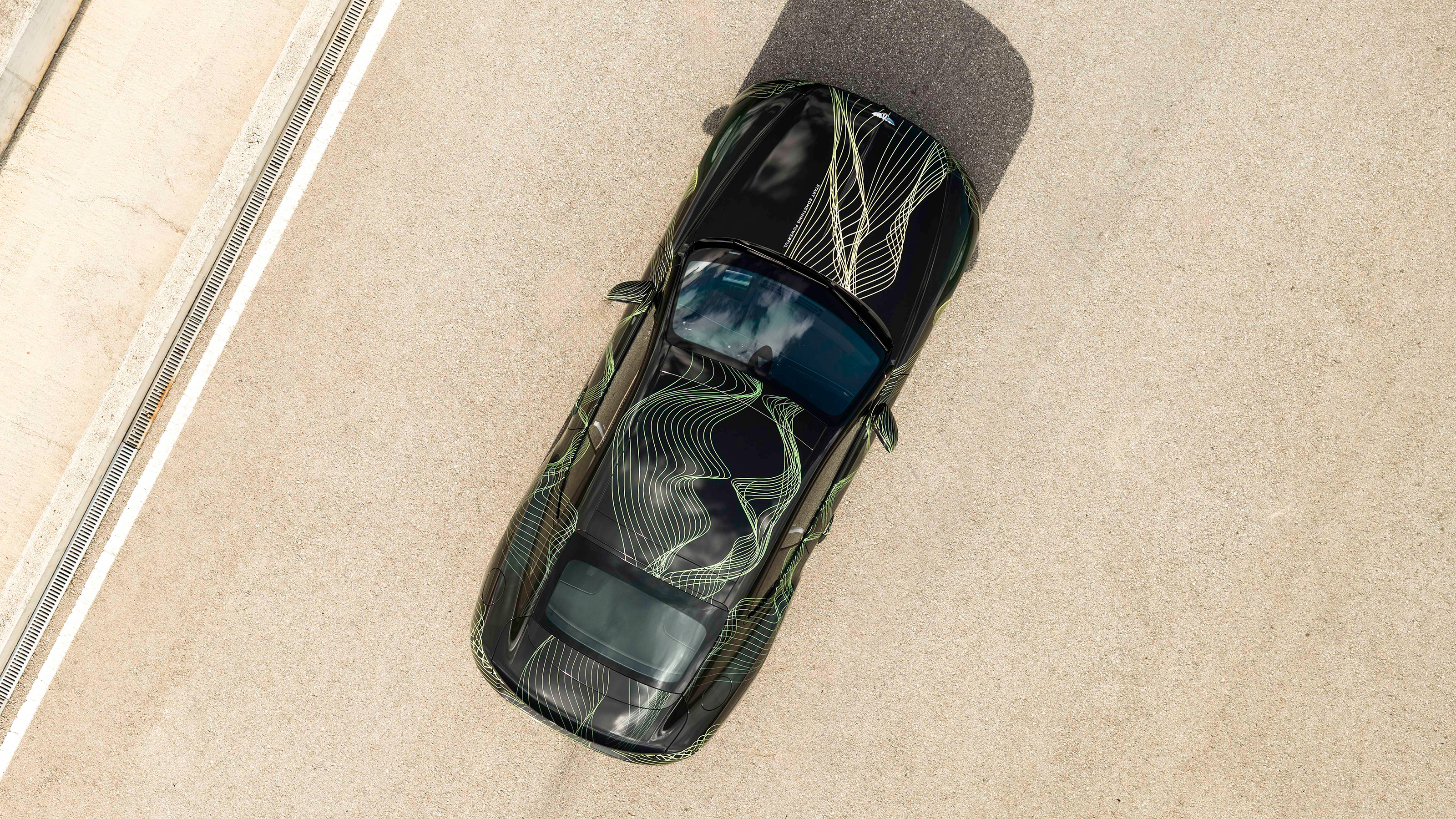
Bentley Continental GT Speed prototype review: the most powerful Bentley ever
What is it?
Bentley’s next-generation Continental GT Speed, complete with a new 4.0-litre V8 biturbo with both a battery and plug-in capability. That’s 771bhp and 36g/km, 50 miles of e-range and rainbows that shoot out of the exhaust. Only one of those things being a lie.
The exterior and interior changes are yet to be released, so we’re driving pre-production prototypes - furnished with a rather fetching sine-wave wrap - on a Spanish racetrack. Probably not the most Bentley of environments, but it’ll do for a first taste.
Why does it look so… marketing?
Bentley wants to reveal the whole car later in the year before drives in Q4, so we’re here to experience just the new drivetrain that’ll replace the outgoing, venerable, and not-very-efficient W12. Though to be honest, for a big 12, it wasn’t that bad if you drove it like both your little toes were fractured.
The cars are the right shape though, so you can see it’s not a huge departure from the deep-sided, big-thighed Conti of old, and there’s a single headlamp either side instead of the previous-generation’s double - and slightly wonky-eyed - arrangement. It’ll be different, but not different enough to scare old-school Bentley buyers.
As mentioned, it’s a few laps around a racetrack - not Bentley’s traditional best-case scenario - and there was some sort of freak weather event that dumped a million litres of rainwater on the circuit just before we went out, but you take what you can get.
What’s it like to drive?
Impossible to be definitive, seeing as a brief four or five laps on a variously wet/dry Spanish racetrack while both chatting to a charming chassis engineer and trying to figure out which mode did what… was quite the intellectual overload. The highlights seemed to be: it steers better than the old W12 and feels lighter at speed, despite being a couple of hundred kilos heavier. It’s also definitely rear-biased in any of the various modes and there’s less feeling of inertia through whatever the suspension is doing. So it feels supple but planted.
It does not, however, seem to have much grip, though that could be the track, which had been baked rubbery for a few days before being deluged just before our laps. Grip was marginal, hard-won and scarce, and the low-rolling resistance tyres - necessary to get that 50-mile ev-only range - struggled to claw any kind of grip from the surface. Still, the new Continental did well given the conditions; stable, confident braking and happily fast.
Are there modes, and do they work?
Four modes (Sport, Bentley, Comfort and Custom), but the interesting selectable extra options are Hybrid and EV. Hybrid metering the electric power to provide max economy, EV mode restricting the car to electric until the battery is depleted. In theory, if you were to run the car at top speed until the battery was exhausted, you’d be limited to the basic 591bhp of the V8, but apparently the recuperation system is so efficient that you’d top up the pack very quickly and be back to plain old hybrid running.
Again, we’ll need to see how that works in the real world, though any situation that requires max-effort for an extended period without any braking is probably quite niche. And German Autobahinish.
Top Gear
Newsletter
Thank you for subscribing to our newsletter. Look out for your regular round-up of news, reviews and offers in your inbox.
Get all the latest news, reviews and exclusives, direct to your inbox.
Other than that, the usual modes are all present and correct, the ropey conditions actually highlighting some of the nuance without having to be travelling at 150mph. There’s active all-wheel drive, an e-diff and torque-vectoring (via braking), all driven through the eight-speed dual-clutch ‘box. Comfort is very stable and neutral, with the system progression adding variously more rear-bias and less aggressive traction control.
It’s a car with better steering than before - the old W12 needing a bit of an amiable wrestle to get it to turn - and a better spread between full comfort and the more sporting modes. You can thank new dual-chamber/ 48-volt adaptive dampers for that breadth of ability. It feels lighter and more precise than it is. So it’s pretty much all good news on the dynamic front in the limited experience we had.
What’s that drivetrain all about?
The electric bits, obviously. Alongside the 591bhp/590lb ft 4.0-litre V8 is a 25.9kWh battery mounted under the boot floor (and yes, you do lose a little bit of luggage space) that drives a hybrid system that’s canted more towards improving performance than outright efficiency. Although if you plug it in enough, the Continental is officially rated at just 36g/km.
The e-motor (or e-machine in Bentley-speak) puts out 188bhp and 332lb ft of torque, giving peaks of 771bhp (780 is the European PS) and 738lb ft (the 1,000Nm of European measurement sounds much more rounded). Simpler, monoscroll turbos sit in the ‘hot vee’ of the V8, supplemented by what Bentley refers to as the e-motor doing some ‘electrocharging’; essentially just torque-filling the hole left in the power graph with electric torque while the turbos push past their lag.
And interestingly, you can fast-ish charge the bijou little pack via a plug; two hours 45 is the quickest charge rate on an actual 7.2kW charger, about a working day if you’re plugging it into a wall plug.
It’s quick for what is not a particularly slim ICE car; 0-62mph in 3.3 seconds, 0-100mph in less than seven. It’s got the same top speed (208mph) as the outgoing W12 (which is more than enough), but that engine punted out 655bhp/644lb ft and hit the benchmark from rest in 3.6 seconds. Marginal gains, but they show progression.
There’s still noise though, right?
Yep, as befits a Speed, there’s still enough V8 gurgle to keep a petrolhead happy. The motor kicks in pretty quickly if you floor it and demand 100 per cent power, and when it does, the shove increases exponentially. The hybrid Speed is still a very rapid car. Imperious rather than breakneck, but it’ll get down a road at quite a lick. It’s not the cultured roar of the W12, but there’s plenty of aural brawn.
And yes, you can pootle about in electric-only mode emitting only the usual faint whine. It’s actually really nice - especially in the GTC where you can sneak about very comfortably. There’s also a little graph on the dialset that will tell you when you’re about to kick the V8 into life, so you can manage your own noise.
And what about practicality?
Interestingly, Bentley is launching both the Coupe and GTC (Bentley code-speak for the convertible) at the same time. Boot space is down a little bit thanks to the battery under the floor and the fuel tank is a little smaller at 80 litres, but there are still two (small) seats in the rear, so this is a 2+2. In a fantastic little bit of public relations sleight-of-hand, Bentley filled the boot with the customised Bentley luggage; most were so concerned with the leathery goodness, they failed to see that the boot was indeed shallower.
The convertible roof is a bit more interesting. Full electric, obviously, it’s a nine-spar system that allows for a flatter roofline, rather than the slightly ballooney, puffed up system with less bridging. It’s much more slick roof up than before, even if the mechanism looks fiendishly complex on the move: the amount of tensioning wires would give a suspension bridge heartburn.
Still, it looks very neat once either up or down, and feels properly insulating, from both weather and intrusive outside noise. We’d have to try it on a real road to be sure though.
There are also a suite of techy-type improvements for the interior, but we’re not allowed to be explicit about any of that for a bit.
So what’s the verdict?
The verdict is, there isn’t one. These pre-production drives are all well and good to whet the appetite, but a brief few laps on a wet track do not a definitive Bentley verdict make. From what we can glean, it’s a good job on both the engine and drivetrain, without losing too much character. No, a hybridised V8 hasn’t got the cachet or singularity of a W12, but the performance and feel won’t disappoint.
Featured

Trending this week
- Car Review
Honda Civic eHEV






